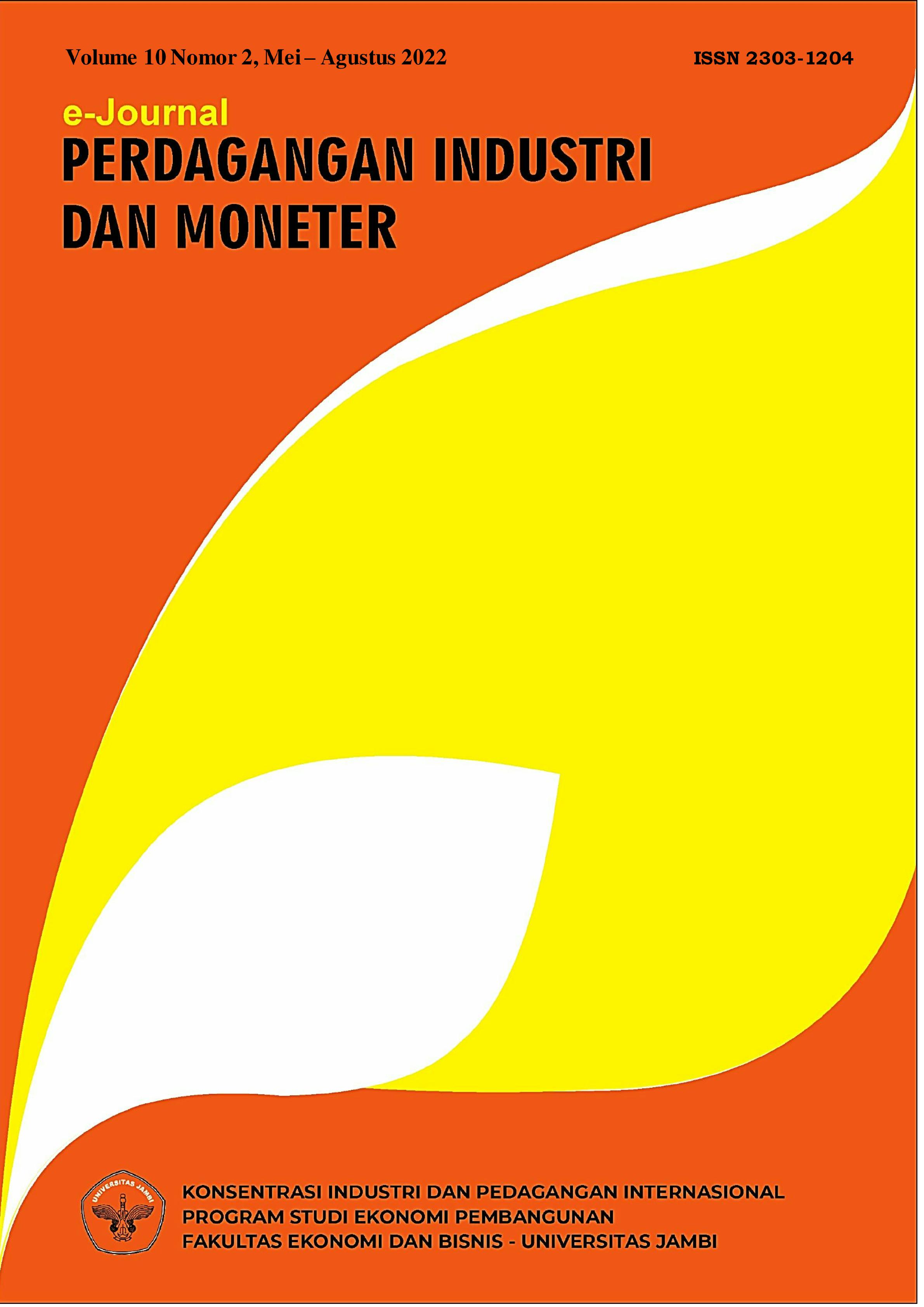Analisis pengaruh penggunaan e-money dan variabel moneter terhadap petumbuhan ekonomi Indonesia 2015-2021
Keywords:
GDP, inflation, E-money, BI RateAbstract
This study aims to analyze and determine whether there is a relationship in the short term and long term between inflation variables, e-money transaction volume, and BI interest rates on Indonesia's gross domestic product. This study uses quarterly time series data starting in the first quarter of 2015 until the fourth quarter of 2021. The analytical tool in this study uses the Error Correction Term (ECM) with Eviews 10 software. The results of this study indicate that the inflation variable has a positive and insignificant effect both in terms of in the long term and has an insignificant negative effect in the short term on the GDP variable. The variable volume of money transactions has a significant positive effect in the long term and has a non-significant positive effect in the short term on the GDP variable. And the Bank Indonesia interest rate variable has a negative effect in the long term and has a significant effect in the short term on Indonesia's GDP variable in the first quarter of 2015 to the fourth quarter of 2021.
Downloads
References
Ajija, & Shocrul Rohmatul. (2011). Cara cerdas menguasai eviews. Salemba Empat: Jakarta.
Ariefianto, & Moch, D. (2012). Ekonometrika esensi dan aplikasi dengan menggunakan EViews. Erlangga: Jakarta.
Augusto Maria, J., Sedana, I. B. P., & Sri Artini, L. G. (2017). Pengaruh tingkat suku bunga, inflasi dan pertubuhan gross domestic product terhadap jumlah uang beredar di Timor-Leste. E-Jurnal Ekonomi dan Bisnis Universitas Udayana, 10, 3477. https://doi.org/10.24843/eeb.2017.v06.i10.p02
Ginting, A. M. (2016). Analisis Faktor-faktor yang mempengaruhi inflasi : studi kasus di Indonesia Periode Tahun 2004-2014. Jurnal Kajian, 21(1), 37–58. Retrieved from https://jurnal.dpr.go.id/index.php/kajian/article/view/766/511
Gujarati, D. (2004). Basic econometrics (ekonometrika dasar). Erlangga: Jakarta.
Hidayati, S., Nuryanti, I., Firmansyah, A., Fadly, A., & Darmawan, I. Y. (2006). Operasional E-money: Jakarta.
Nuraini, I. (2017). Peningkatan ketahanan ekonomi nasional dalam rangka menghadapi persaingan global"Malang.
Nursari, A., Suparta, I Wayan, & Yoke, M. (2019). Pengaruh pembayaran non tunai terhadap jumlah uang yang diminta masyarakat (M1) dan perekonomian. Jep, 8(10), 285–306.
Rahardja, P., & Manurung, M. (2008). Pengantar Ilmu ekonomi, edisi revisi. Fakultas Ekonomi Universitas Indonesia: Jakarta.
Sancaya, K. S., & Wenagama, I. W. (2019). Pengaruh Tingkat suku bunga, tingkat inflasi, kurs dollar as terhadap jumlah uang beredar di Indonesia. E-Jurnal EP Unud, Vol 8 No 4, 703–734. Retrieved from https://ojs.unud.ac.id/index.php/eep/article/view/ 42855/28830
Suseco, T. (2016). Effect of e-Money to Economic Performance (A Comparative Study of Selected Countries). The 2016 International Conference of Management Sciences, (November), 9–12.
Syarifuddin, F., Hidayat, A., & Tarsidin. (2006). Dampak peningkatan pembayaran non-tunai terhadap perekonomian dan implikasinya terhadap pengendalian moneter di Indonesia. 370–400. Retrieved from https://www.bmeb-bi.org/index.php/BEMP/ article/view/346/318
Tee, H., & Ong, H. (2016). Cashless payment and economic growth. Financial Innovation, 1–9. https://doi.org/10.1186/s40854-016-0023-z
Widarjono, A. (2018). Ekonometrika Pengantar dan aplikasinya disertai panduan Eviews. (Edisi Keli). UPP STIM YKPN Yogyakarta: Yogyakarta.
Yazid, M. (2018). Inflasi, KURS, dan suku bunga terhadap pertumbuhan ekonomi. Jurnal EKOMBIS, 1(1), 38–45. Retrieved from http://journal.feb.unmul.ac.id/ index.php/JIEM/article/view/1381
Downloads
Published
How to Cite
Issue
Section
License
Copyright (c) 2022 Muhammad Aditya Muzakky, Lucia Rita Indrawati

This work is licensed under a Creative Commons Attribution-ShareAlike 4.0 International License.








